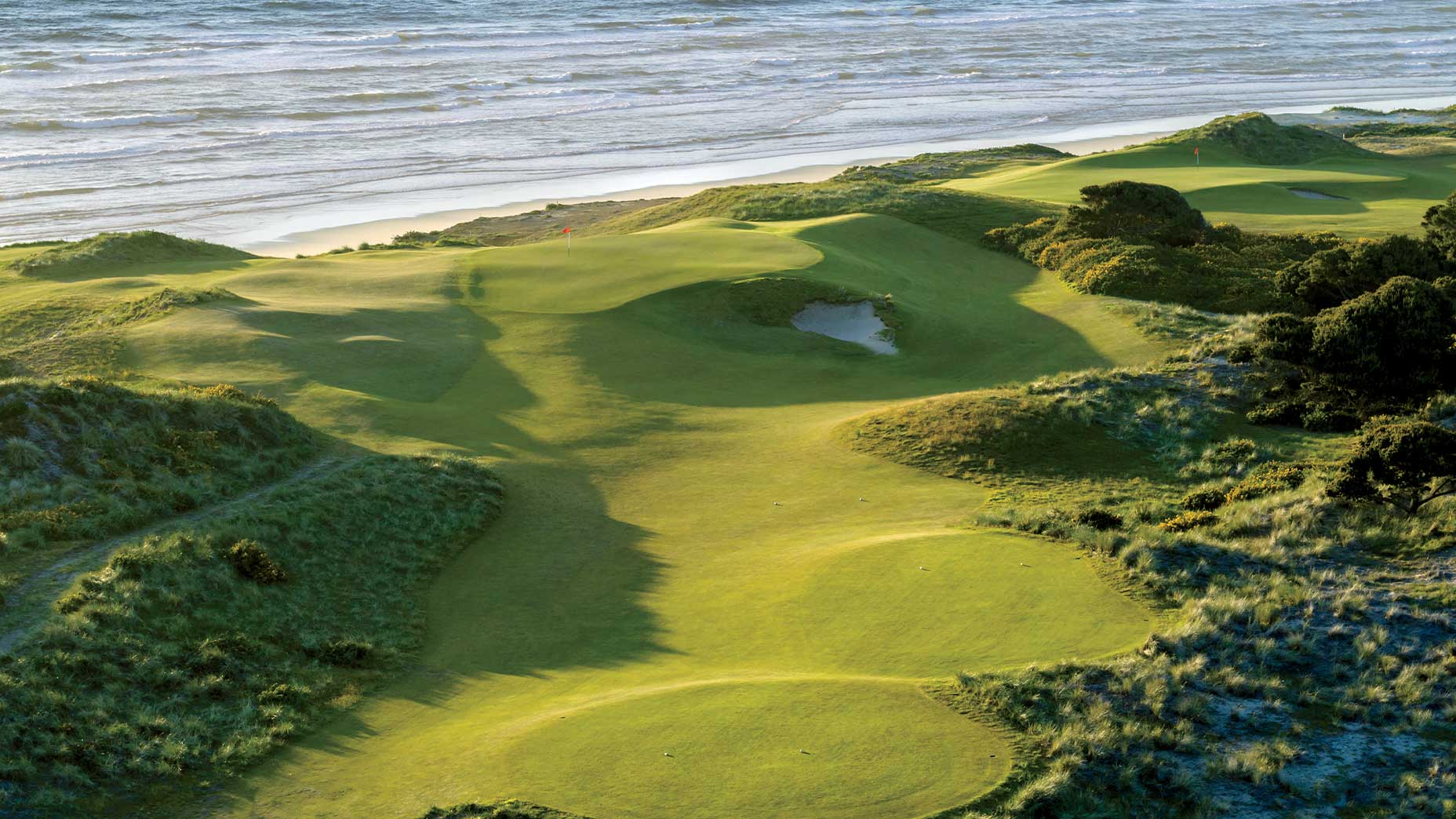What exactly makes a golf course great? Scores of weighty volumes and a zillion breezy blog posts have addressed this question, many of them settling on this answer: Great courses marry artistry and scenery with shot-making variety in a manner that blends seamlessly with their surroundings. Thatâs for starters. The consensus holds that great courses also make you think. They engage and entertain. Offer up any of these observations with your pals over a post-round drink and itâs unlikely anyone will argue. But they may come back with âHow about some examples?â
To help you strike an authoritative stance without coming off as a windbag, we asked a quartet of premier architects â Tom Doak, Bill Coore, David McLay Kidd and Jim Wagner â to discuss their own work as illustrations of how their design ideas play out in the field.
Architect: David McLay Kidd
Course: Bandon Dunes
Design principle: Create shot options
Anytime youâre weighing the merits of a course, David McLay Kidd suggests you look at what it offers in the way of options. Options promote strategy, and strategy is central to great design. Check out how that works on Kiddâs oceanside par 3 at Bandon Dunes Golf Resortâs namesake course. Playing across a hollow to a green set on a ridge, the tee shot is demanding if youâre firing at the pin. You do so at your peril â there are falloffs back and right and a fearsome front-right bunker â but not by obligation. Kidd provides an outlet.Â
âYou can play short left all day and two-putt from there, regardless of where the hole is cut,â he says.
As a Scotsman who grew up on match play, Kidd conceived of the closing stretch at Bandon as a dramatic stage for just that format. He got his wish at the 2020 U.S. Amateur, where player after player in the final matches opted to take aim at the back flag on 15, propped in a narrow portion of the green. A few pulled it off. More often, they were punished.
âI was there watching, unable to understand why they didnât play for the fat of the green and take a near-certain par that would likely win the hole,â Kidd says.
Then again, thatâs what he was after: tough decisions, potential second-guessing.
âEither way, I want you to be thinking about it later,â Kidd says. âWhether itâs the great shot you executed or the one you might imagine trying to play the next time around the course.â
